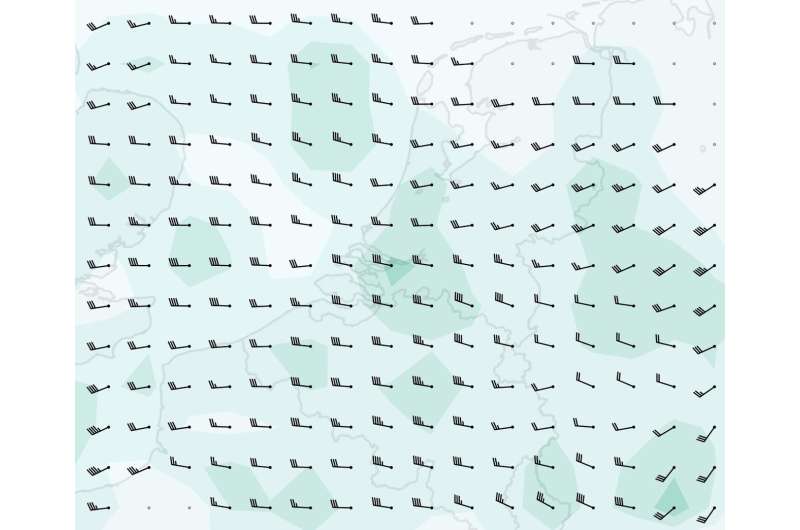Using aircraft as weather stations

To fly safely, aircraft need accurate updates on wind and temperature. But together, aircraft can also act as a sensor network that provides information to make weather models and predictions better, researchers at Delft University of Technology (TU Delft, The Netherlands) have found. This week, they published their findings in PLOS One.
Wind and temperature data are important parameters in aircraft performance studies. The lack of accurate measurements of these parameters forces researchers to rely on numerical weather prediction models, which are often filtered for a larger area with decreased local accuracy. "Aircraft, however, also transmit information that can be used to derive weather conditions in response to interrogation by air traffic controller surveillance radars," says researcher Junzi Sun of TU Delft.
Although not intended for this purpose, aircraft surveillance data contains information that can be used for weather models. "Our paper presents a method that can be used to reconstruct a weather field from surveillance data that can be received with a simple receiver," says Sun. "We answer two main research questions: how to accurately infer wind and temperature from aircraft surveillance data, and how to reconstruct a real-time weather grid efficiently. We consider aircraft as moving sensors that measure wind and temperature conditions indirectly at different locations and flight levels. Aircraft barometric altitude, ground velocity and airspeed are decoded from down-linked surveillance data. Then temperature and wind observations are computed based on aeronautical speed conversion equations."
"To address the second question, we propose a novel model for constructing the wind and temperature fields. Short-term local prediction is also possible by employing a predictor layer. Using an unseen observation test dataset, we are able to validate that the mean absolute errors of inferred wind and temperature using our model are 67 percent and 26 percent less than when using the conventional numerical weather prediction model."
The new model is fully open to air traffic management and the scientific community. Without the need for any new equipment or communication protocols, the implementation of such a system can be enacted using existing technology and data sources. "Based on the single receiver demonstrated in our paper, we believe that future research can offer meteorological monitoring capability with a large coverage by using data from existing receiver networks."
More information: Weather field reconstruction using aircraft surveillance data and a novel meteo-particle model, Junzi Sun, Huy Vû, Joost Ellerbroek, and Jacco M. Hoekstra (all TU Delft). doi.org/10.1371/journal.pone.0205029
Journal information: PLoS ONE
Provided by Delft University of Technology




















